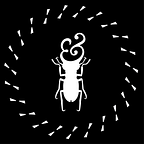Going from 2D to 3D
Make anything you want; 3D printing
Published in
2 min readOct 13, 2019
Learning to 3D print is simple until it’s not.
- Step 1 — Understanding what can you make with a 3D printer? Today in late 2019 you print almost anything. You can print a 3D heart model that replicates the feel, responsiveness, and biomechanics of human anatomy. Or a working gun, 3D printed firearms easily break after firing a few rounds. While these are two examples could be considered polar, I find it empowering to print parts for other things or create new things to solve old problems.
- Step 2 –– Understand the different kinds of printers and printing materials. I currently have access to the bolded.
There are seven types of 3D printers available:
- Fused deposition modeling (FDM)*the most popular due to it’s affordability. AKA Fused Filament Fabrication (FFF)
- Stereolithography(SLA)
- Digital light processing(DLP)
- Selective laser sintering (SLS)
- Selective laser melting (SLM)
- Laminated object manufacturing (LOM)
- Digital beam melting (EBM)
- Step 3 –– Learn Computer-aided design (CAD) software. I have played with sketchup in the past but never did anything serious with it. I took an intro to CAD workshop and learned Onshape a free online CAD software.
To start out I wanted to print my printers mark, a 2D vector. I ended up downloading Blender and watched youtube tutorials on how to take a vector and transform it to 3D.
The transformation went fairly smooth. I do think building it in a CAD prorgam will allow for a more realistic beetle.
- Step 4 –– After saving a STL file format in blender I had to use a Slicer program (the printer I used has its own). A 3D printing slicer prepares the selected model for your 3D printer, generating G-code, which is a widely used numerical control (NC) programming language.
- Step 5 –– Printing! Everything started out great until I noticed my base skirt had peeled off in one corner of the printer bed. This could have happened due to the skirt being to small and/or the fact the printers bed was dirty and needs to be cleaned.
